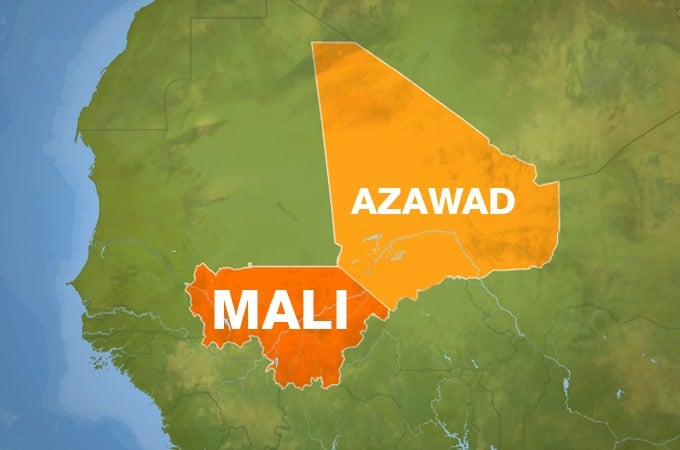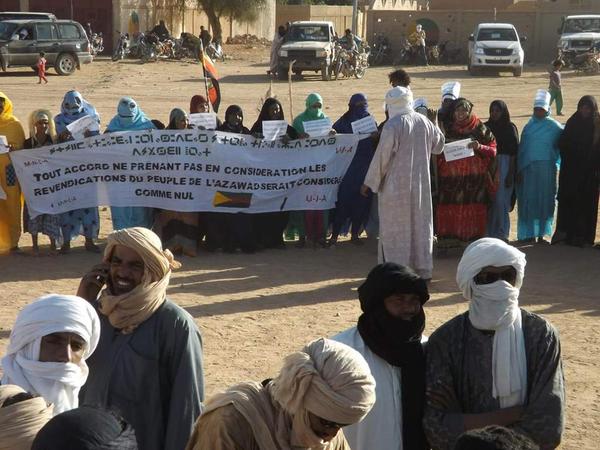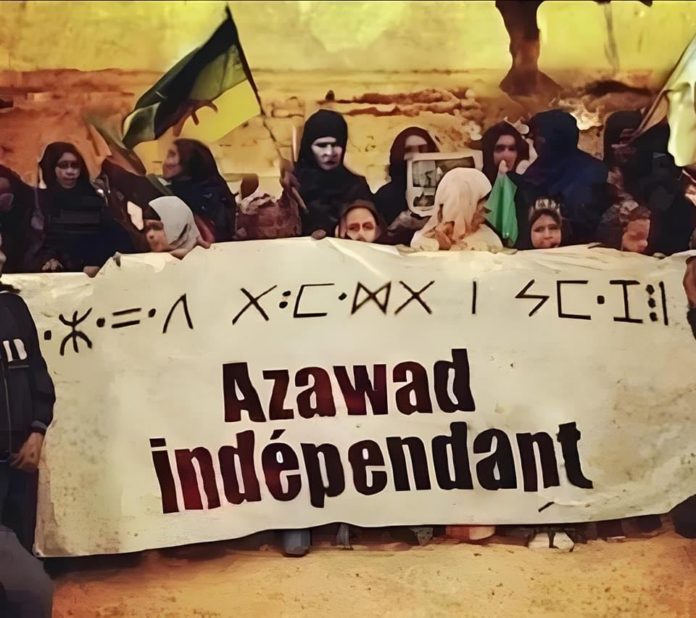“The battle for Azawad represents the nearest approach to an Amazigh state in today’s world. A pressing question arises: when will other Amazigh youths support Azawadians, both intellectually and financially, in their quest to establish a secular nation?”
The Saharan region’s rich tapestry of history unveils a tale of perseverance, resistance, and identity. The Amazigh of the South, popularly known as the Tuaregs, have for centuries been the very soul of this vast desert. Their legacy includes resisting colonial rule and dominating the Sahara’s caravan trade routes. With the colonial era drawing to a close, France divided the Imuhagh’s lands among multiple nations, paving the way for confrontations, particularly with Mali and Niger.

In 1963, a deep-rooted conflict between the Tuaregs and Mali began to unfold. Before 1960, when Mali celebrated its independence, over 300 Imuhagh tribal chiefs petitioned France to either maintain their autonomy or recognize their independence. Their plea fell on deaf ears, and
soon after, the Malian government began imposing heavy taxes on Tuareg herders and executing suspected rebels.
The 1980s brought with them a severe famine that nudged many Tuaregs to migrate, and a significant number found themselves under the Libyan flag, receiving military training from Khadafi. However, sensing his ulterior motives, they defected, armed with weapons and a determination to establish independence for Azawad (Northern Mali) and l’Aîr-Azawagh (Northern Niger).
This situation captured international attention, with countries like France already exploiting resources. Meanwhile, Libya and Algeria closely watched the developments, concerned about the impact on their portions of Tuareg territories. The Tuaregs were colloquially described as “the Kurds of Africa,” highlighting their intricate geopolitical significance in the region.

In the early 1990s in Azawad, the MPLA(The Popular Movement For Liberation of Azawad), under the leadership of Iyad Aghali, attacked the town of Menaka in Mali. This assault provoked a retaliation from the Malian army. After the Malian government lost many battles, a series of peace talks and agreements ensued but were inadequately enforced, leading to more insurgencies and divisions among Tuareg factions. Algeria played a pivotal role in shaping the trajectory of the Tuareg rebellion, initially causing divisions within the Tuareg groups and later advocating unification.
Another rebellion emerged in 2006, centered on autonomy for Tuareg regions and the non-enforcement of previous accords – this time led by Ibrahim Ag Bahanga, a well known Tuareg leader. Another peace agreement was signed with Mali, but also not implemented.
The strife persisted as a new generation in Azawad felt overlooked and threatened by the emergence of Al-Qaida in their territory. By 2010, Tuareg youth established the MNA (Mouvement National de l’Azawad), a pacific, secular movement advocating autonomy from Mali. However, actions by the Malian government against the MNA led to the formation of an armed faction, the MNLA – le Mouvement National de Liberation de l’Azawad).
In 2012, hostilities broke out between the MNLA and the Malian authorities. During this period, Iyyad Ag Aghali, previously secular person, affiliated with the Tuareg cause for autonomy, founded the religious group Anssar-iddin, deviating from his earlier secular views because the MNLA would not let him lead as a result of his failure in 1990s rebellions.
The 2012 conflict in Mali originated when the MNLA tried to negotiate with Mali from November through January but Mali would not accept autonomy for Azawad. The MNLA attacked Adjelhock, a crucial Malian military base. This assault intensified tensions and instigated violence against Tuareg civilians in Bamako, Mali’s capital, causing many to flee. These escalating tensions contributed to a coup d’état in March 2012. Subsequently, the MNLA seized control of major cities but also pockets that had sleeping cells of Al-Qaida factions that existed since 2006. In addition, ideological rifts arose between the MNLA and Ansar-Din,a jihadist group, concerning their vision for the region: MNLA wants a secular Amazigh state and Ansar-Din wants Shari’a law.
This conflict witnessed the MNLA’s endeavors to free Azawad from Mali and introduce a secular interim government with Gao being it is capital and declaring independence on April 6th, 2012.
By January 2013, various extremist factions, including Al-Qaida, Mujao, and Ansar-Din, sought dominion over all of Mali and kicked out MNLA in big cities. This situation compelled the Malian government to request assistance from France, leading to a military intervention.
When the French helped Mali take over big cities like Timbuktu, and Gao, many civilians Amazigh were executed. As a result of these execution, and the Azawad forces presence in Kidal, France refused to help Mali take over Kidal because they considered it as an internal conflict and the MNLA is not a terrorist organization, but a movement seeking freedom for its people.
In the summer of 2013, a peace agreements talks were initiated, and Mali supposed to meet with the MNLA in a neutral place to continue negotiating, but that did not happen – they spent 8 months preparing to take over Azawad.
Tensions lingered that led to a battle between the MNLA and the Malian government, culminating in the May 21, 2014, battle where the MNLA pushed out Mali outside of most Azawad cities and reclaimed significant territory.
Following Azawad’s military triumph in the battle on May 21, 2014, Mali called for a ceasefire. Algeria prominently mediated peace discussions between Mali and the MNLA. However, the MNLA perceived these talks as imposed. The peace accord was eventually signed but was seen as insufficient in granting genuine autonomy to Azawad.
The role of terrorism in the region is multifaceted. While religious motivations are frequently cited, geopolitical, and resource-centered motives are also evident in the context of Azawad. Countries like Algeria express interest in Azawad’s natural resources, and leaders in Mali, Niger, strategically exploit the presence of terrorist entities for both financial and political benefits.
Though the peace agreement did not fully align with Azawad’s interests, a glimmer of hope emerged in 2015 when the Tuaregs of Azawad signed a peace treaty with the Malian government. However, this calm was fleeting.
Eight years after the agreement, with support from the Wagner Group (a Russian private security firm), Mali attempted to retake Azawad, contravening the terms of the peace treaty.
In September 2023, Mali even proceeded to sign a pact with Burkina Faso and Niger to collectively reclaim Azawad. The combined forces of these three countries, along with the Wagner Group, inflicted civilian casualties in Azawad each time they were defeated by Azawad forces.
The Liptako Gourma agreement, signed by Mali, Niger, and Burkina Faso, propelled many of the Amazigh of Azawagh-Air (Niger) to ally with Azawad forces in their struggle against the combined Sahel forces.
The battle for Azawad represents the nearest approach to an Amazigh state in today’s world. A pressing question arises: when will other Amazigh youths support Azawadians, both intellectually and financially, in their quest to establish a secular nation?

